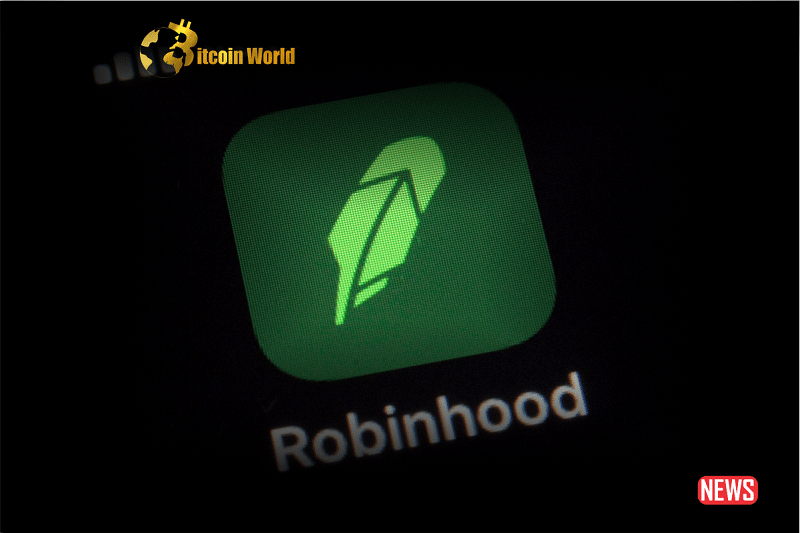The popular online brokerage platform, Robinhood Markets, is once again making headlines, but this time it’s not about meme stocks or cryptocurrency surges. The company is reportedly planning to reduce its workforce by approximately 150 full-time employees, representing about 7% of its total staff. This news marks the third instance of job cuts for Robinhood in just over a year, leaving many to wonder about the factors driving these decisions.
Why the Layoffs? Adapting to Shifting Sands
So, what’s behind this latest round of belt-tightening at Robinhood? According to an internal message cited by The Wall Street Journal, Robinhood’s Chief Financial Officer, Jason Warnick, pointed to the need to adapt to fluctuating trading volumes and optimize team structures. While the company spokesperson neither confirmed nor denied the specific number of job cuts, they emphasized a continued focus on operational excellence and making necessary adjustments based on factors like trading activity, workload distribution, and overall organizational design.
Think of it like this: when the market is booming and everyone’s actively trading, a brokerage firm needs a larger team to handle the influx of activity. Conversely, when things cool down, they might need to adjust their resources. It’s a delicate balancing act.
A Look Back: Previous Rounds of Job Cuts
This isn’t Robinhood’s first rodeo when it comes to layoffs. In fact, the company underwent two significant rounds of job cuts in 2021, resulting in over 1,000 employees losing their jobs. The primary drivers behind those earlier cuts were a decrease in trading activity and a subsequent decline in profits. Remember the peak frenzy of 2021 with meme stocks and the surge in new investors? That level of activity was difficult to sustain.
The Numbers Tell a Story: From Boom to Adjustment
Let’s take a quick look at the numbers to understand the context:
- Q2 2021 (Peak):
- Active Users: 21.3 million
- Revenue: Over $565 million
- Q1 2023:
- Monthly Active Users: Down 44% from the peak
- Year-over-Year Revenue Decline: 30%
These figures clearly illustrate the shift in market dynamics and the challenges Robinhood has faced in maintaining its earlier momentum. The initial surge of new users and trading activity during the pandemic eventually normalized, impacting the company’s bottom line.
The X1 Acquisition: A Strategic Move Amidst Adjustments
Interestingly, this latest round of potential layoffs comes on the heels of Robinhood’s acquisition of credit card firm X1 for a cool $95 million. This move signals Robinhood’s ambition to diversify its offerings and expand beyond its core brokerage services. It begs the question: how do these seemingly contrasting actions – layoffs and an acquisition – fit together?
It’s possible that the acquisition of X1 is a strategic long-term play, aimed at attracting new users and revenue streams. The layoffs, on the other hand, could be a necessary short-term measure to optimize resources and ensure financial stability while investing in new ventures.
Navigating the Market: Challenges and Opportunities
Robinhood, like many other online brokerages, operates in a dynamic and competitive landscape. Several factors can influence their performance:
- Market Volatility: Fluctuations in the stock market directly impact trading volumes and user engagement.
- Competition: The online brokerage space is crowded, with established players and new entrants vying for users.
- Regulatory Changes: New regulations can impact how brokerage firms operate and the services they can offer.
- User Behavior: Shifts in investor sentiment and trading preferences can affect platform usage.
What Does This Mean for Robinhood’s Future?
Despite the recent challenges, there are glimmers of optimism for Robinhood. The company’s shares have shown some signs of recovery, currently trading around $9.63, representing an 18% increase for the year. However, it’s important to note that this is still a significant drop from its all-time high in August 2021.
Robinhood is clearly in a period of transition, focusing on adapting to the current market environment and strategically positioning itself for future growth. The layoffs, while undoubtedly difficult for those affected, appear to be part of a broader effort to streamline operations and ensure long-term sustainability.
Key Takeaways:
- Robinhood is reportedly planning a third round of layoffs, impacting approximately 7% of its workforce.
- The company cites the need to adapt to changing trading volumes and improve team alignment as primary reasons.
- These layoffs follow previous job cuts in 2021, driven by reduced trading activity and declining profits.
- Despite challenges, Robinhood is pursuing strategic initiatives like the acquisition of X1.
- The company’s stock price has shown some recovery, but remains significantly below its peak.
Looking Ahead: A Balancing Act
Robinhood’s journey reflects the volatile nature of the financial markets and the challenges faced by companies operating within this space. The ability to adapt, innovate, and manage resources effectively will be crucial for their future success. While these layoffs represent a difficult moment for the affected employees, they also highlight the ongoing efforts by Robinhood to navigate the evolving landscape and regain its footing in the competitive world of online brokerage.
Disclaimer: The information provided is not trading advice, Bitcoinworld.co.in holds no liability for any investments made based on the information provided on this page. We strongly recommend independent research and/or consultation with a qualified professional before making any investment decisions.


